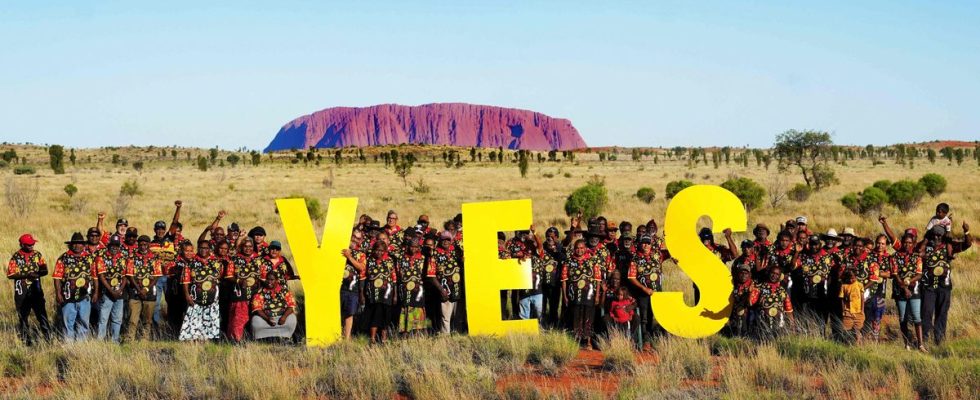Australian Aborigines have been present on the continent for at least 60,000 years. This Saturday, Australians are called to vote in a historic referendum to finally recognize their rights. Between tense campaign, divisions within the country and probable result, 20 minutes takes stock for you.
What is the purpose of the vote?
Australians are being asked if they want to amend the 1901 Constitution to recognize indigenous people for the first time. If the reform is passed, Aboriginal Australians will be recognized for the first time and given the right to be consulted by the government on laws impacting their communities, a project called ‘The Voice’. Australia has around 984,000 Aboriginal and Torres Strait Islander people, or 3.8% of the population.
Why this referendum?
Supporters of this project say that giving indigenous peoples a voice will address the inequalities they face, even if the government may ignore their recommendations. Europeans landed in Australia in 1606 and colonized a continent inhabited for thousands of years by the Aborigines, whom they subjugated and sometimes massacred.
Today, Indigenous Australians have the same rights as other citizens, but they still suffer from stark inequalities. More than two centuries after British colonization, members of these communities have a life expectancy eight years lower than that of other Australians.
They are on average poorer, more sick or imprisoned and have less access to education. Supporters of “no” believe that the reform lacks precision, adds a layer of unnecessary bureaucracy, confers special privileges on indigenous peoples and would do little to improve their lot.
What are the predictions?
Prime Minister Anthony Albanese calls for a “yes” vote to end “200 years of broken promises and betrayals, failures and false starts”. But the reform has little chance of being adopted given the latest polls which give around 40% “yes” and 60% “no”.
This represents a reversal of trend compared to last year, when the reform was announced. The “no” campaign flourished thanks to concerns around the new powers granted to Aborigines, during debates often peppered with racist arguments, and a wave of misinformation on social networks.
Few referendums in Australia’s history have succeeded in convincing voters. Only eight consultations out of 44 proposed were approved. The others all failed due to a lack of combined government and opposition support, including a vote in 1999 on Australia becoming a republic.
How does the referendum take place?
Voting is compulsory for Australia’s 17.7 million voters, under penalty of a fine of 20 Australian dollars (12.10 euros). To be adopted, the amendment must obtain a majority of votes nationally, but also in four of Australia’s six regional states.
Voters will be asked to answer the following question: “Bill: amend the Constitution to recognize Australia’s first peoples by establishing an Aboriginal and Torres Strait Islander voice. Do you approve of this proposed change? »
How would “the Voice” work?
“The Voice” would be a permanent organ, chosen by Aboriginal and Torres Strait Islander people. It would be made up of indigenous people from across the country and could make submissions to Parliament and the government, or answer their questions. He would have no veto power. If the reform is adopted, it is expected that the details of this body will be defined later by Parliament.

